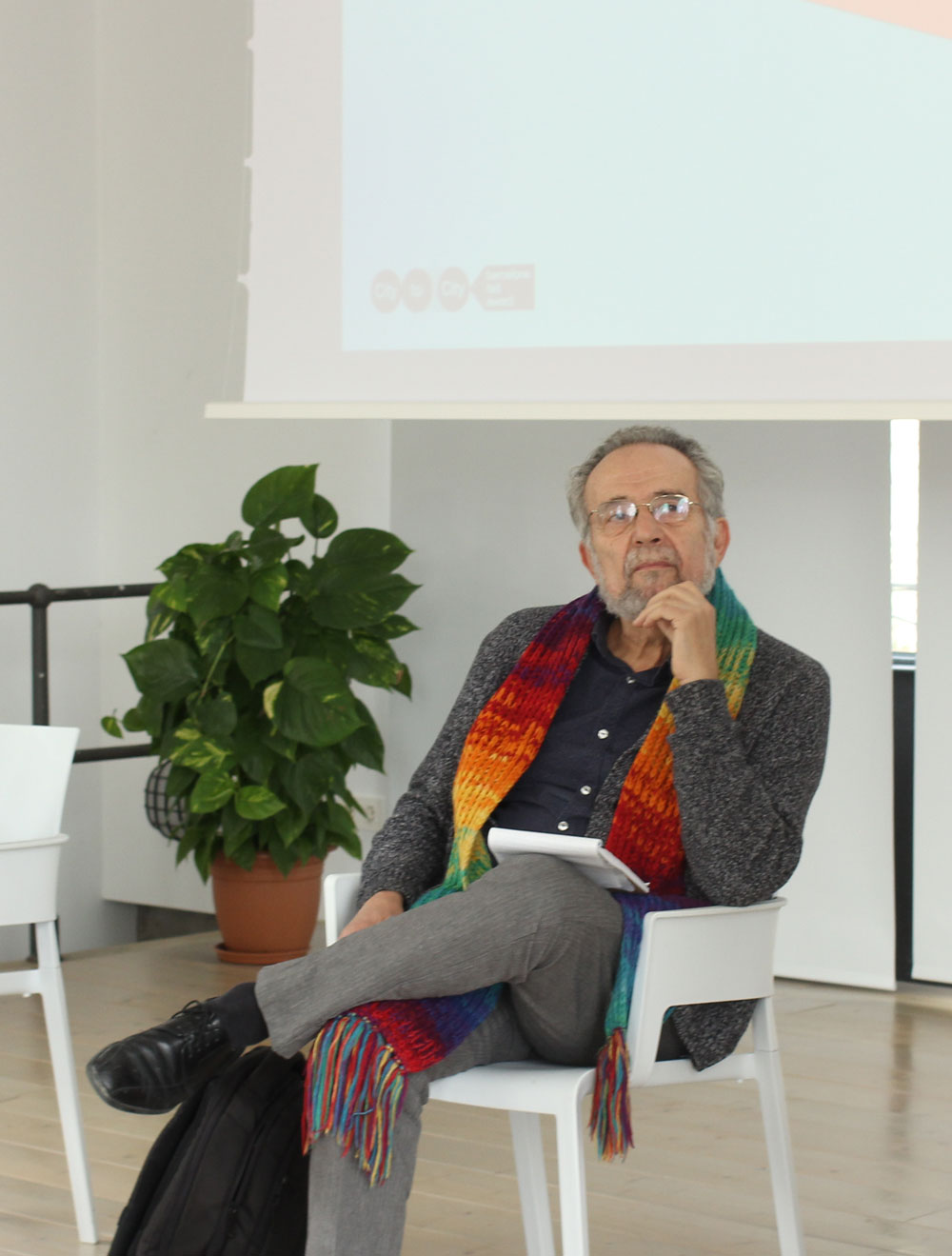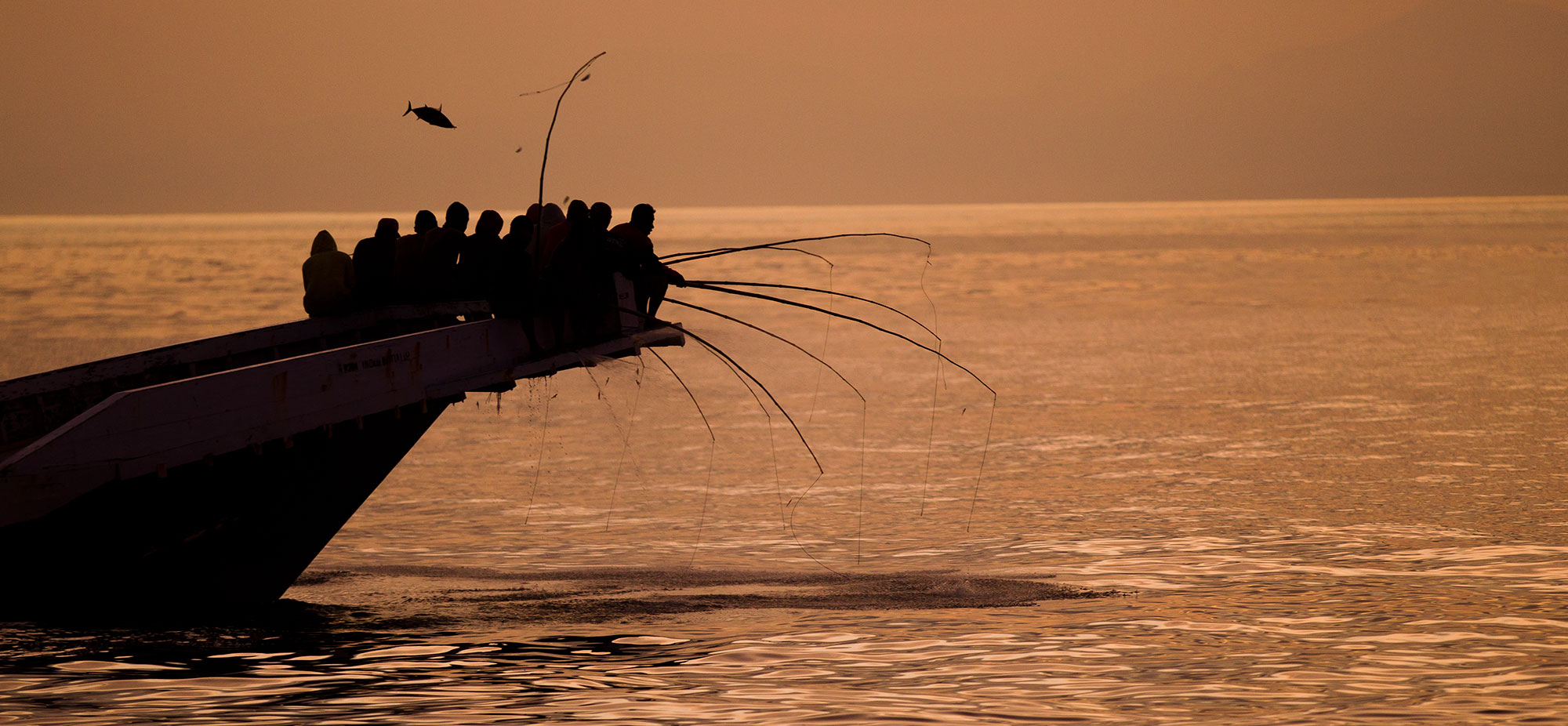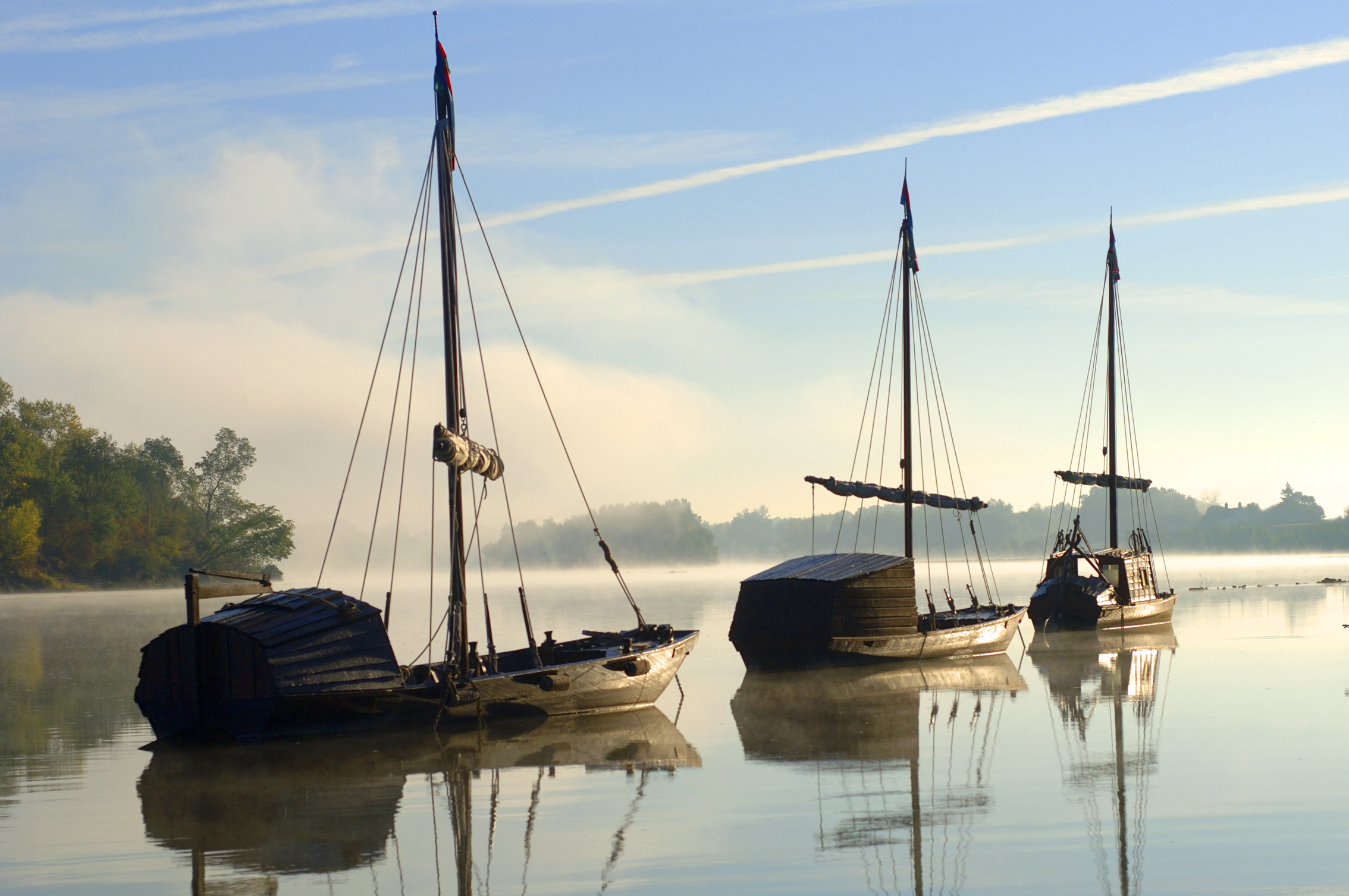“Water is a main vector in climate change”
ho
Interview with Pedro Arrojo, expert in water economics and president of the jury of the City to City Barcelona FAD Award.

On the occasion of the prize-giving ceremony of the City to City Barcelona FAD Award on November 21st, which has been awarded for the first time ex-aequo to two projects: Eau de Paris and Blue Communities, we talked to Pedro Arrojo, an expert in water economics, Goldman Prize and promoter of the Foundation for a New Culture of Water. Arrojo has been the president of the jury of this edition of the award and he believes water plays a central role in the face of the great challenge of our society, climate change.
You were the promoter of the Foundation for a New Culture of Water (FNCA) in the mid-90s, what is it and what has it achieved since then?
It is a foundation of experts, academics and water management professionals who come up with an approach to develop new ideas, a new approach to water management and planning from the field of research, through technicians and experts from different disciplines for the definition of new strategies and new approaches. It has the will to be, from the academic world, a bridge between the public water administration, responsible for hydrological planning, and the social movements that at the time of its creation began to rise to flag the new culture of water.
The FNCA is the reference in the world of water experts that seek to develop and specify alternatives in a new philosophy in which rivers are not treated as pure H2O channels, but as living ecosystems, and in which the communities affected by large dams maintain their right to live where they live and not to be displaced, putting their basic rights in crisis, even if they are minorities. In 2000 the framework directive on water was approved, the new European legal framework, and for us, it was no surprise but for many people who still operated under the classic vision of the concrete, of big infrastructures, it was a surprise that Europe gave us the reason.
You participated in the opposition to the development of the national hydrological plan of 2001, what consequences did it have?
After having chaired the first two Iberian congresses for a new water culture, that of Zaragoza and Oporto, which led to the creation of the Foundation, it served as a network of experts to advise the debate on the national hydrological plan and, above all, the great transfers from the Ebro river to Barcelona and Almeria. We advised the European Commission directly and we also talked to social movements and the administration. I think that the Spanish University, through the Foundation, was for the European Union (EU) a key advisor to block the European funds that would have gone to finance the Ebro river transfer. The government said some things and the European Commission consulted us. The arguments and data that we facilitated allowed to restrain the national hydrological plan in favor of other more ethical, sustainable and acceptable alternatives for the European Union.
The Aznar government intended to finance more than 50% of the transfer with European funds. When these were denied, the plan could not move forward. Obviously, behind the transfer lay the construction of a lot of large highly conflictive dams, with large economic interests behind. And even once the transfer issue was over, when it was repealed by Cristina Narbona, some plans were maintained, other plans were annulled by the courts and some were built despite everything, with great social opposition. Most have entered into crisis and it has been seen that there were other more reasonable alternatives. But the debate continues … What was blocked mainly were the planned transfers of the Ebro river to Barcelona and Murcia and Almeria.
Is the FNCA similar, in terms of its objectives, to Blue Communities, one of the winning projects of City to City FAD Award?
Not quite. The FNCA was born focused on questions of the hydrological planning of the river basins. But later another problem appeared: the front of the privatizing pressures of the water and sanitation services. In that land is where Blue Communities emerges, like many other movements. Here in Spain, there is a network, the Public Water Network (RAP), or organizations linked to urban issues, to urban water management. At that time the foundation became a reference for social movements linked to problems of municipal management. Another scenario also appeared, that of the network of academics and experts that faced, didn’t accept and promoted a rational alternative to the privatization of water and sanitation services, very in line with these movements, among which could be Blue Communities or the RAP. There, too, the efforts of the Barcelona City Council to recover control of its water and sanitation services, or of Madrid, opposing the privatization of the Isabel II channel. Since the foundation, we played a role of advising and creating alternatives to the privatization of water and sanitation services.

This conception of water is interesting as a culture, not as an exploitable resource. What are the difficulties in extending this idea? How do you think you could reach more people?
The intuition that there were contradictions in the management of rivers and their ecosystems, and that these contradictions led to the need for new water policies, new institutions, new laws and new technologies, is now a certainty. To think of water as a culture is to go a little further, it is to question the scale of values, the priorities and, ultimately, the ethics and the underlying values with which we relate as a society with our rivers, with nature. In reality, what we promote is a new culture of our relationship with nature, in the sense of moving from the traditional paradigm of domination of nature, to a paradigm of sustainability: understanding that rivers are not H2O channels, just like forests cannot be treated as storehouses of pure wood, but are living ecosystems and not simply resources. If we understand ecosystems as a common heritage, water must also be a common good that must be preserved for this generation and future ones, as a human right of universal access.
Do you think that our water management is influenced by a dominant and oppressive vision of the human species with respect to natural resources?
Yes, I often say that this vision of domination of nature has a deep connection with that vision of domination of women, understood as an appropriable issue and that is managed at the will of its owner. That is not possible. Feminist sensibility and environmental sensitivity and water culture have many connections. Understanding water, a key element of life and also of society, as a pure instrument or resource and just like that, leads to unsustainability, and in the medium term leads us precisely to that paradoxical crisis in which we are already: the crisis global water on the planet water, the blue planet.
As an expert, have you observed a greater awareness in the matter and the multiplication of more sustainable water management policies at the international level?
Inevitably, movements push change, but culture is not changed from one day to the next. The movements of cultural change, of paradigm, are simmering in society. In Europe there is legislation, which is the water framework directive, which we have had to transpose into Spanish legislation reluctantly from the various governments. In fact, in parliament, I have proposed a profound reform of the current water law to make the necessary changes that are imposed not only by the new water culture, but also by the water framework directive, which is a European legal obligation. There is no doubt that things have changed; the ideas that we started to defend in the 90s, at that time were considered pilgrim ideas and enemies of progress, today everyone talks about the terms we started to introduce then. The paradigm shift is made first at the level of ideas, but in practice, real changes in attitude and politics take much longer. Many of the ideas that were theories at that time, today are directives that must be followed. But there is still much to do.
Is Paris a role model in public water management?
Paris was the flagship of privatization and it has reversed that model and transformed it into one that is public, transparent and participatory. Anyone can enter its web and get much more information about how things are done in Eau de Paris than in their city or town. In addition, it has drastically reduced costs for citizens and the urban water and sanitation rate in a large city. However, the finances are perfectly balanced, the maintenance of the infrastructures has an investment greater than what was before and it is transparent. This is how they have achieved a model that, instead of being a dark business, has been transformed into a non-profit public service that works. And to achieve this in a city as visible and as emblematic as Paris, is a double achievement because not only it is a good model but it represents an example for cities around the world.
What other models are inspiring?
It depends on what we refer to. If we refer to water management and urban sanitation, we will have examples in cities of different sizes. Paris is a good example, but so is Jaraba, a town of 1,000 inhabitants in Aragon, which assumed the construction and public and transparent management of its treatment plant, suitable for a small town, which works wonders and which is tenfold cheaper than the privatization of sanitation in your community. From purely rural terrain, small towns, there are many very positive and hopeful examples that are keeping water as a public service of general interest and not as a business. At European level, Berlin has a good model, and at a national level, Córdoba and Zaragoza.
If we refer to the management of rivers or ecosystems already, there are many examples. One is the resolution of the crisis of the High Loire, in France: instead of having valleys flooded and uninhabited in the name of the hydroelectric power station, you have one of the most beautiful river parks in Europe, with a flourishing tourism that has given an economic growth to the whole region. In the exhibition “Waters, rivers and towns” inaugurated during the International Exposition of Zaragoza 10 years ago and available online, there is a section called “victories and solutions” and there you can explore more inspiring models like this one. Another example would be the half million fluvial cisterns in the entire semi-arid and desert area of northeastern Brazil, as an alternative to the great transferences of the San Francisco River.

What are the major challenges of the next 10 years in terms of global water management?
The big challenge, not only in the water issue, but in many other issues, is to confront climate change. What happens is that climate change has the main vector of change in water. The vector of most important affection on the populations is the hydric vector, by the changes in the amount and in the form of raining; more intense and prolonged rains, great storms and therefore greater risks of floods and floods. There we have the greatest risks and the greatest impacts. The biggest challenge of the decade is to accelerate the transition to the new water culture under the pressure of climate change. It means doing what we were saying that had to be done, but now with greater urgency and necessity because climate change imposes.
At the domestic level, what small things should we change to make more sustainable use of water?
Well, it’s a question that you hear a lot and I think it has a social blaming component that does not make much sense. Domestic water represents 1% of the water we use in society. The value is not in how much water you save or what improvements in some aspect, but in the responsibility that you take to press politically to the authorities, to the companies and to the whole society to become aware of their responsibility in front of the irrigation, the industry, water planning, etc. Small things can be done at the domestic level, but what we can do at the social and political level to change things is much more important.